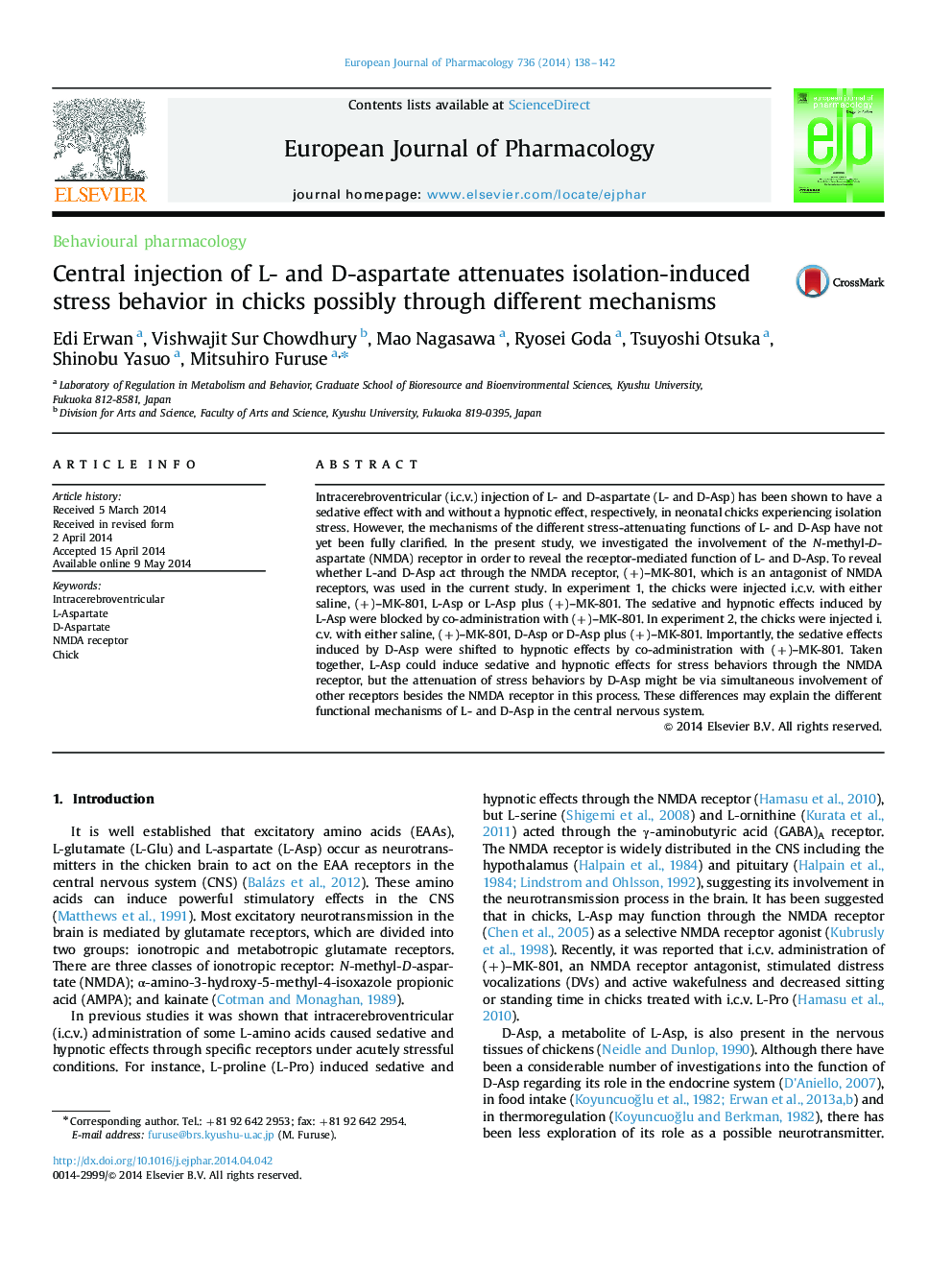| Article ID | Journal | Published Year | Pages | File Type |
|---|---|---|---|---|
| 2531716 | European Journal of Pharmacology | 2014 | 5 Pages |
Intracerebroventricular (i.c.v.) injection of L- and D-aspartate (L- and D-Asp) has been shown to have a sedative effect with and without a hypnotic effect, respectively, in neonatal chicks experiencing isolation stress. However, the mechanisms of the different stress-attenuating functions of L- and D-Asp have not yet been fully clarified. In the present study, we investigated the involvement of the N-methyl-D-aspartate (NMDA) receptor in order to reveal the receptor-mediated function of L- and D-Asp. To reveal whether L-and D-Asp act through the NMDA receptor, (+)–MK-801, which is an antagonist of NMDA receptors, was used in the current study. In experiment 1, the chicks were injected i.c.v. with either saline, (+)–MK-801, L-Asp or L-Asp plus (+)–MK-801. The sedative and hypnotic effects induced by L-Asp were blocked by co-administration with (+)–MK-801. In experiment 2, the chicks were injected i.c.v. with either saline, (+)–MK-801, D-Asp or D-Asp plus (+)–MK-801. Importantly, the sedative effects induced by D-Asp were shifted to hypnotic effects by co-administration with (+)–MK-801. Taken together, L-Asp could induce sedative and hypnotic effects for stress behaviors through the NMDA receptor, but the attenuation of stress behaviors by D-Asp might be via simultaneous involvement of other receptors besides the NMDA receptor in this process. These differences may explain the different functional mechanisms of L- and D-Asp in the central nervous system.
